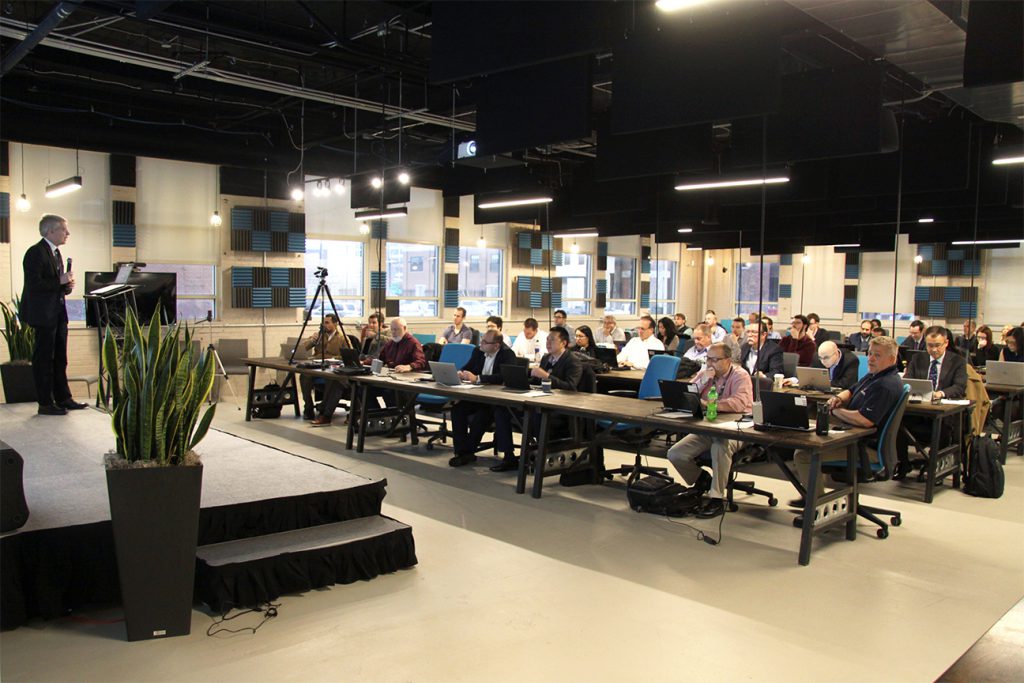DAYTON, Ohio – For today’s warfighters, advances in technology are the key to remaining competitive. Design challenges generate competitiveness between teams that create cutting-edge products with real-world application.
The Air Force Research Laboratory Sensors Directorate and Wright Brothers Institute hosted the Gallium Nitride (GaN) Radio Frequency (RF) Power Amplifier Design Challenge kick-off session, Jan. 28, in Dayton, Ohio.
“This kick-off event is critical because it’s our avenue for disseminating information for the participants,” said Glen “David” Via, the technical advisor assigned to the Sensors Directorate Trusted Electronics Branch. “This event fosters competition which then leads to innovation.”
GaN is an element that has several performance advantages used to enhance or enable a wide array of applications, like the 5G wireless network and electronic warfare. This challenge promotes collaboration between the Sensors Directorate and external organizations to enhance domestic competences.
“The goal of this challenge is to lower barriers to entry to advanced GaN technology, engage with non-traditional GaN power amplifier designers, and foster domestic design and fabrication capabilities,” said Via.
Experts from commercial, academia and defense organizations arrived at the kick-off session to learn more about the challenge and future benefits of partnering with AFRL and WBI.
The design teams have one month to propose a four-page plan for their designs that include technical merit, design and test capability, technology transition opportunities, cost, and schedule.
“We’re trying new things,” said Via. “We’re looking for alternative solutions.”
The winning team(s) of this challenge will have access to state-of-the-art design tools, advanced GaN foundry offerings, and are also eligible for up to $200,000 in funding opportunities to further develop their design concept.
“Differentiating capability comes from the ability to apply new technologies at the speed of relevance,” said Dr. Brian Dupaix, the Principal Engineer with the Sensors Directorate Trusted Electronics Branch. “To keep the fight unfair, the Air Force must continually challenge itself to developing deployable components that leverage next-generation technologies.”
The Air Force Research Laboratory Sensors Directorate leads the discovery and development of future capabilities, providing integrated Intelligence, Surveillance, and Reconnaissance (ISR), combat identification, and spectrum warfare effects. This design challenge illustrates how the directorate continuously produces groundbreaking capabilities.

The Air Force Research Laboratory Sensors Directorate and the Wright Brothers Institute hosted the Gallium Nitride (GaN) Radio Frequency (RF) Power Amplifier Design Challenge kick-off session, Jan. 28, in Dayton, Ohio. The goal of this challenge is to lower barriers to entry to advanced GaN technology, engage with non-traditional GaN power amplifier designers, and foster domestic design and fabrication capabilities. (U.S. Air Force photo/Ted Pitts)

